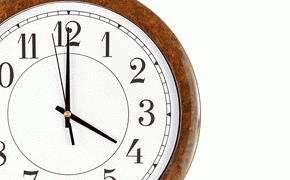
Here are the key things you need to know before you leave work today.
TODAYS RATE CHANGES
BNZ has raised its Total Money savings rate by 25 bps to 3.1%. It has raised a number of similar savings rates by a similar amount. F&P Finance have also raised rates today. Their one year rate is now 4.65% for a deposit of $25,000.
EMPLOYMENT CONFIDENCE UP
The June Westpac McDermot Miller employment confidence recorded higher confidence in the employment market.
BUSINESS CONFIDENCE FALLS SHARPLY
Optimists continue to well outnumber pessimists but business confidence and other survey measures are sliding. The Reserve Bank will be quite content; the economy needs to slow from a gallop to a canter if a boom-bust scenario is to be avoided, said ANZ. Growth signals remain strong, and inflation messages are waning: a good mix for keeping the OCR on the low side and the economy on a roll. But the size of the drop surprised markets. The currency dropped on the news.
BUILDING CONSENT DATA MIXED
Todays release of building consent data for May showed a mixed result. It was reasonably strong except in Auckland where the number of houses consented was lower than the same month a year ago. And given the level of public projects, the private sector drive seems to be lacking.
TREASURY HAPPY WITH GROWTH MODERATION
Treasury's monthly economic survey out today was sanguine. "Data released in June confirmed momentum from the second half of 2013 carried on into 2014 with the economy continuing to expand at an above-potential growth rate in the March quarter. Indicators for domestic demand, including the ongoing surge in net migration, point to a continuation of that momentum into the June quarter and – despite some easing in consumer confidence and business sentiment indicators – solid growth is forecast throughout the rest of 2014. With our preferred estimate of the output gap now showing that the economy is operating near full capacity, inflationary pressures will continue to build over 2014 and beyond requiring further monetary tightening by the Reserve Bank. This – combined with further moderation in the housing market and easing commodity prices – will temper domestic demand somewhat."
CONSUMERS DRIVE CREDIT GROWTH
Levels of borrowing by rural enterprises reached a record $52.7 bln in May. Business debt is growing too, but is now only back to 2009 levels at $80 bln. The big borrowers in New Zealand are households who have $206.6 bln in debt, of which $192.3 bln is for housing. Business and rural debt is growing at about +3% while households are adding debt at more than 5% per year. Our commercial sectors are more prudent than our households.
DEPOSIT GROWTH VERY STRONG
Maybe one reason consumers are borrowing freely is that their bank accounts are building quickly. According to the RBNZ C17 "household deposits" survey, these deposits grew at a remarkable +9.2% in the year to May. That makes it more than 39 straight months where this growth has been more than 7%. Deposits in PIE accounts are growing at an even more remarkable rate of +16.5%.
RBNZ PLANS TO EXCEED FUNDING AGREEMENT
According to the RBNZ 2015 Statement of Intent, the central bank says (on the very last page) that it will spend $1.4 mln more than "net expenditure provided for in the Funding Agreement". Given it plans to make a $186.5 mln profit, its probably not a big deal.
WHOLESALE RATES
Wholesale swap rates went sideways today. There were rises, but only 1 bp. The 90 day bank bill rate was higher again however today and is now 3.64%.
OUR CURRENCY
The NZ dollar was stronger again today reaching 87.8 USc until the business confidence data arrived. Then it dived -40 bps. It is now back at 87.5 USc, and has fallen against the Aussie too where it is now at 92.9 AUc. The TWI is now under 81.4.
You can now see an animation of this chart. Click on it, or click here.
4 Comments
Afternoon David - Curious to understand what is the percentage of household debt to say the RV of total housing stock? Are we worse than say the Brit's or Aussies?
The RBNZ reports housing stock values quarterly using QV to provide the number. That latest data is $718.7 bln. as at Dec 31, 2013. At that time, mortgages totaled $188.6 bln. So that makes the overall LVR at 26.2%.
I don't have the Aussie data handy. I will see if I can find it. Any British data is completely irrelevant to NZ no matter what it is. But Canada or provinces, or some US states might be interesting.
There are some OECD numbers (for Australia for 2013, but curiously not NZ) which show that households own assets of "land and buildings" of $4,738.5 bln and owe loans on that of $1,681.0 bln. That gives an LVR of 29.1%. But I don't know whether the data is consistent with the RBNZ NZ data. Probably is, though.
I will be very impressed if you can source Australian nation-wide data, I've never been able to find a reliable series. There is the main city series, but that is like comparing New Zealand national debt to Auckland house prices.
Compared to what Euorpean countries and the U.S. that I have been able to find data for, NZ has a low level of debt to the value of the housing stock. But that seems that unlike every other country there has been no relationship in the increase raw amount of debt and the increase in the dollar amount of house prices thrrough the 2000s.


We welcome your comments below. If you are not already registered, please register to comment.
Remember we welcome robust, respectful and insightful debate. We don't welcome abusive or defamatory comments and will de-register those repeatedly making such comments. Our current comment policy is here.